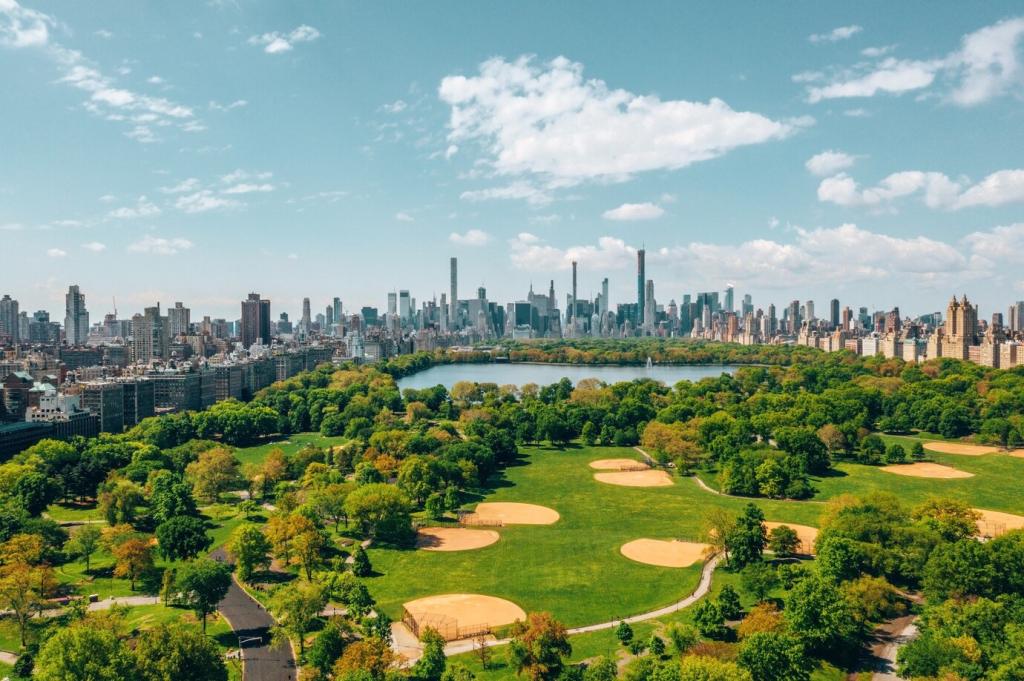Wind Energy Innovations for City Environments
Wind energy is rapidly transforming urban landscapes by introducing advanced solutions tailored for dense city environments. As cities strive to become more sustainable, innovative wind technologies are emerging to capitalize on available resources and integrate seamlessly with urban infrastructure. These advancements are overcoming traditional barriers and bringing clean energy closer to the places where it is needed most. Discover how new wind energy solutions are shaping the cities of the future and making urban life greener.

Vertical Axis Wind Turbines in Urban Design
Compact Turbine Integration on Rooftops
One of the key innovations in urban wind energy involves the integration of compact turbines on building rooftops. These turbines are specially engineered to work with the turbulent and often unpredictable wind patterns found around high-rise structures. Their lightweight and modular designs allow for easy installation without significant structural reinforcements. The energy produced can directly offset building electricity consumption or supplement other renewable sources, creating hybrid systems that maximize efficiency. Rooftop wind installations exemplify how cities are leveraging existing infrastructure to accommodate sustainable energy generation while maintaining architectural integrity.
Aesthetic Considerations and Urban Planning
The incorporation of wind turbines into cityscapes must account for more than just technical feasibility—visual harmony is critical. Modern VAWTs are designed with an emphasis on aesthetics, blending into skylines and sometimes even adding an element of visual intrigue. Urban planners now work closely with turbine manufacturers to ensure installations enhance, rather than detract from, the appeal of public and private spaces. This approach not only encourages wider public acceptance but also paves the way for policy support and citywide adoption of wind energy solutions.
Noise Reduction and Safety Improvements
Traditional wind turbines have faced criticism for their noise and potential safety concerns, especially in densely populated environments. Urban wind energy innovations address these issues by utilizing quieter mechanisms, advanced vibration dampening materials, and safety features that prevent component detachment. These improvements ensure that wind energy systems do not disrupt city life or pose risks to residents and pedestrians. By continuously refining design standards, manufacturers are safeguarding both quality of life and energy sustainability in urban areas.
Previous
Next
Turbine Design Innovations for City Efficiency
Blade Technology and Material Advancements
Urban wind turbines require blades that can capture energy from variable and often chaotic wind flows. Advances in blade aerodynamics, flexible materials, and lightweight composites have increased efficiency and reduced maintenance needs. Novel blade shapes are designed to work optimally at lower wind speeds typical of cityscapes, while robust materials help manage environmental stresses like pollution and vibration. These technological strides make urban turbines more reliable and cost-effective, supporting their widespread adoption within densely populated areas.
Modular and Scalable Turbine Architectures
Modular turbine architectures allow for flexible and scalable urban wind installations. Each modular unit can function independently or be combined into larger arrays tailored to the energy demands and spatial constraints of different urban locations. This adaptability simplifies both the installation and maintenance processes. Scalable turbine systems also enable cities to expand their wind energy capacity incrementally, testing new solutions without committing to large-scale overhauls or disruptions to daily life.
Turbine Placement and Computational Modeling
Optimal placement of turbines is crucial in cities, where buildings create complex patterns of airflow. Computational fluid dynamics (CFD) modeling is now routinely used to analyze and predict how wind moves around structures, helping engineers determine the best turbine locations for maximum energy capture. This data-driven approach not only improves performance but also minimizes the risk of interference with existing urban activities. The use of simulations and advanced analytics leads to smarter investments and more effective integration of wind technology into the heart of city environments.
